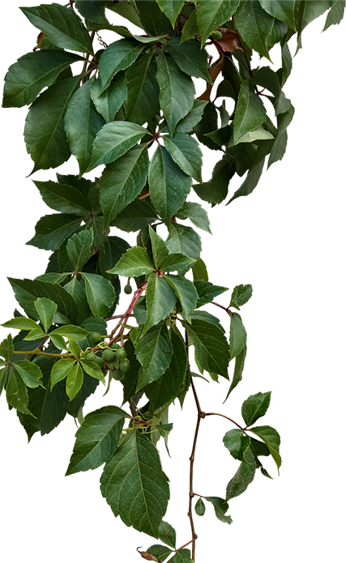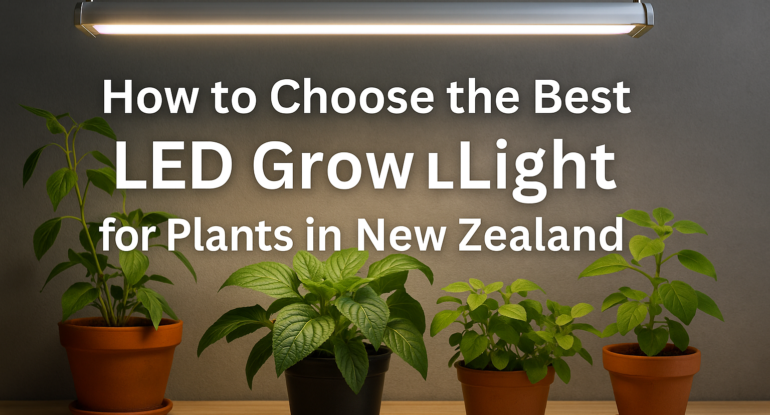
21
Jun
Best Fruits for Indoor Farming in New Zealand: A Complete Grower’s Guide
Indoor farming has surged in popularity in New Zealand thanks to rising food costs, unpredictable weather, and the desire for sustainable, homegrown produce. While leafy greens and herbs are commonly grown indoors, fruit-bearing plants can also thrive in controlled environments—with the right setup. Whether you live in a compact Auckland apartment or have a backyard greenhouse in Canterbury, growing fruit indoors offers year-round harvests, better pest control, and fresher produce at your fingertips. In this blog, we explore the best fruits for indoor farming in New Zealand, the optimal growing conditions, and how to achieve maximum yields using hydroponics, containers, and LED grow lights. Can Fruits Really Be Grown Indoors in New Zealand? Absolutely! With advancements in LED lighting, nutrient delivery systems, and compact dwarf varieties, it’s entirely possible to grow many fruit species indoors—even in New Zealand’s climate. Benefits of indoor fruit farming in NZ include: Protection from harsh weather (especially in South Island regions) Reduced pest and disease risk Year-round yields with grow lights Better water conservation with hydroponics Fresh, organic fruit without chemical pesticides Top 10 Best Fruits to Grow Indoors in New Zealand Here’s a curated list of fruits that thrive indoors, considering NZ’s seasonal conditions and indoor farming capabilities. 1. Strawberries ✅ Ideal for: Small spaces, hanging baskets, hydroponics ✅ Light: 10–12 hours/day with full-spectrum LED grow lights ✅ Variety Tip: Try “Temptation” or “Tristan” – both compact NZ varieties Strawberries are compact, fast-growing, and love well-lit environments. You can grow them in containers, vertical towers, or NFT hydroponic systems. 2. Dwarf Tomatoes ✅ Ideal for: Container gardening, greenhouses, indoor grow tents ✅ Light: 12–14 hours/day ✅ Variety Tip: “Tiny Tim”, “Patio Princess”, or NZ hybrid cherry tomatoes Although technically a fruit, tomatoes are one of the most productive and rewarding indoor crops. Use trellises or tomato cages for support. 3. Blueberries ✅ Ideal for: Cool indoor environments (especially in South Island) ✅ Light: 10–12 hours/day ✅ Variety Tip: “Northland” or “Misty” – low chill NZ-suited varieties Blueberries thrive in acidic soil and need cross-pollination, so plant at least two different cultivars. Great for pots and large containers. 4. Figs ✅ Ideal for: Greenhouses, large containers, indoor corners with good light ✅ Light: 10+ hours/day ✅ Variety Tip: “Black Mission” or “Petite Negra” dwarf fig trees Figs do surprisingly well indoors and are self-pollinating. They prefer warmth and dryness, making them perfect for well-insulated rooms. 5. Meyer Lemons ✅ Ideal for: Sunrooms, balconies, or warm indoor areas ✅ Light: 12+ hours/day ✅ Variety Tip: “Improved Meyer” – a dwarf citrus cultivar Meyer lemons are one of the easiest citrus fruits to grow indoors in NZ. They produce fragrant flowers and juicy lemons, even in pots. 6. Passionfruit (in Grow Tents or Greenhouses) ✅ Ideal for: Indoor trellis walls or vertical gardens ✅ Light: 12+ hours/day ✅ Variety Tip: “Black Passion” – NZ-adapted variety While a bit more advanced, passionfruit can grow indoors with proper vine support, humidity, and light. Ensure good airflow to prevent fungal issues. 7. Banana (Dwarf Cavendish) ✅ Ideal for: Indoor atriums, conservatories ✅ Light: 12–14 hours/day ✅ Variety Tip: “Dwarf Cavendish” – compact and ornamental While bananas require more space, you can successfully grow dwarf varieties indoors, especially in North Island regions or heated indoor spaces. 8. Pineapple ✅ Ideal for: Indoor planters, sunrooms ✅ Light: 10+ hours/day ✅ Fun Fact: You can regrow pineapples from tops Pineapples are surprisingly easy to grow indoors from crowns. They love warmth, bright light, and well-drained soil. Water only when dry. 9. Gooseberries and Currants ✅ Ideal for: Indoor patios, greenhouses ✅ Light: 8–10 hours/day ✅ Variety Tip: Choose thornless gooseberries or “Red Lake” currants These NZ-favourite berries adapt well to containers and are shade-tolerant. Use organic compost-rich soil and prune regularly. 10. Chilli Peppers (Yes, a fruit!) ✅ Ideal for: Windowsills, kitchen counters, grow tents ✅ Light: 12–14 hours/day ✅ Variety Tip: “Thai Hot”, “Apache”, or “Numex” small fruiting types Chilli plants are compact, colourful, and fast to fruit. Ideal for beginner indoor growers, especially with LED lighting support. Lighting Tips for Indoor Fruit Production in NZ Unlike leafy greens, fruiting plants require more intense light and longer exposure times. Here’s how to set up your lighting: Type of Plant Daily Light Requirement Recommended Light Type Strawberries 10–12 hrs Full-spectrum LED Tomatoes 12–14 hrs Red/blue focused LED Lemons 12+ hrs High PAR full-spectrum Blueberries 10–12 hrs White-balanced LED Use grow light timers for consistency Keep lights 30–50 cm above plant tops Ensure good heat dissipation in grow tents Hydroponics for Fruit Production Hydroponic farming is booming in NZ for its low water usage and faster yields. For indoor fruiting: Use NFT systems for strawberries Drip systems for tomatoes and peppers Deep Water Culture (DWC) for leafy fruits Always monitor pH (5.5–6.5) and EC levels weekly for optimal nutrient uptake. Indoor Fruit Farming Challenges & Solutions Challenge Solution Pollination issues Use a small brush or electric pollinator manually Light deficiency in winter Invest in high-quality LED grow lights Overwatering Use moisture meters or smart sensors Pest control indoors Introduce neem oil sprays or sticky traps Limited space Use hanging baskets, vertical shelves, or towers Best Practices for Indoor Fruit Farming in NZ Use containers with drainage holes Rotate pots weekly for even light exposure Avoid sudden temperature drops in winter Fertilise regularly with fruit-specific nutrients Join local groups like “Indoor Growers NZ” on Facebook or Reddit Sustainability & Indoor Fruit Farming Indoor fruit farming contributes to a greener future in New Zealand by: Reducing food miles Encouraging water-saving hydroponics Promoting chemical-free growth Supporting urban food security Urban centres like Auckland, Wellington, and Christchurch are already seeing increased adoption of compact indoor farms, even in high-rise apartments. Conclusion Indoor fruit farming in New Zealand is not just possible—it’s deliciously rewarding. With a bit of planning, the right lighting, and proper varieties, you can enjoy fresh strawberries, juicy lemons, and vibrant cherry tomatoes from the comfort of your home. As technology continues to make indoor

21
Jun
Best Vegetables for Indoor Farming in New Zealand: Grow Fresh Produce Year-Round
With rising food costs, limited outdoor space, and an increased focus on sustainability, more New Zealanders are turning to indoor vegetable farming to grow their own fresh produce. Whether you’re living in a compact Auckland apartment or managing a smart indoor farm in Wellington, the good news is—you can successfully grow a wide variety of vegetables indoors. Thanks to modern techniques like hydroponics, LED grow lights, and vertical farming systems, growing vegetables indoors in New Zealand is easier and more productive than ever. In this detailed guide, we’ll cover the best vegetables to grow indoors, how to set up a productive system, and tips for year-round harvesting in Aotearoa. Why Indoor Vegetable Farming Is Gaining Popularity in New Zealand New Zealanders are increasingly choosing to grow food at home due to: Rising grocery prices Limited garden space in urban areas Unpredictable outdoor weather Desire for pesticide-free produce Interest in sustainable and local food systems Indoor farming provides complete control over temperature, light, water, and nutrients, allowing you to grow vegetables year-round—even during chilly winters or rainy seasons. Top Benefits of Growing Vegetables Indoors in NZ ✅ Fresh produce year-round ✅ No need for large outdoor gardens ✅ Fewer pests and diseases ✅ Faster harvest cycles ✅ Better water efficiency with hydroponics ✅ Environmentally friendly and space-saving Top 10 Vegetables to Grow Indoors in New Zealand 1. Lettuce ✅ Type: Loose-leaf or romaine varieties ✅ Light: 10–12 hours per day (use LED grow lights) ✅ Growth Time: 30–40 days ✅ Best For: Beginners, hydroponics, windowsills Lettuce is the most beginner-friendly indoor crop. It grows quickly, requires little space, and thrives in cool indoor environments. 2. Spinach ✅ Type: Baby spinach or New Zealand spinach ✅ Light: 10–12 hours/day ✅ Growth Time: 35–50 days ✅ Best For: Containers or vertical trays Spinach grows fast indoors, especially in cooler South Island homes. Rich in iron and versatile for salads or cooking. 3. Cherry Tomatoes ✅ Type: Dwarf or patio varieties ✅ Light: 12–14 hours/day (essential) ✅ Growth Time: 60–80 days ✅ Best For: Warm indoor spaces, grow tents Cherry tomatoes are compact, prolific, and ideal for indoor trellising. Ensure proper pollination and light exposure for fruiting. 4. Capsicum (Bell Peppers) ✅ Type: Mini bell or snacking varieties ✅ Light: 12–14 hours/day ✅ Growth Time: 60–90 days ✅ Best For: Greenhouses, containers with LED support Peppers love warmth and light. Indoors, they thrive in controlled environments and add vibrant colour and crunch to meals. 5. Radishes ✅ Type: Cherry Belle, French Breakfast ✅ Light: 8–10 hours/day ✅ Growth Time: 25–30 days ✅ Best For: Quick harvests, beginners Radishes are the fastest-growing indoor crop. Their short growth cycle makes them perfect for small-space or rotation planting. 6. Carrots (Mini Varieties) ✅ Type: Thumbelina, Little Finger ✅ Light: 10–12 hours/day ✅ Growth Time: 60–75 days ✅ Best For: Deep containers with loose soil Carrots need depth but not width. Choose smaller types and ensure the soil is free-draining and well-aerated. 7. Herbs (Basil, Parsley, Coriander, Mint) ✅ Light: 8–12 hours/day ✅ Growth Time: 30–50 days ✅ Best For: Windowsills, hydroponic kits While technically not vegetables, herbs are a must-have for every indoor gardener in NZ. They’re aromatic, space-efficient, and high-yielding. 8. Green Beans ✅ Type: Bush beans (compact variety) ✅ Light: 10–12 hours/day ✅ Growth Time: 45–60 days ✅ Best For: Trellised containers, warm rooms Beans can grow indoors with support poles. They’re high in protein and produce multiple harvests if maintained well. 9. Spring Onions ✅ Light: 8–10 hours/day ✅ Growth Time: 30–40 days ✅ Best For: Recycled containers, small pots Scallions or spring onions are low-maintenance and regrow quickly. Ideal for small spaces or as a cut-and-come-again crop. 10. Kale ✅ Light: 10–12 hours/day ✅ Growth Time: 50–70 days ✅ Best For: Winter indoor gardens, hydroponic trays Kale is a cool-loving green that thrives in NZ homes year-round, particularly during the colder months. Best Growing Methods for Indoor Vegetables 🌱 1. Soil-Based Containers Use organic potting mix, choose pots with drainage holes, and water consistently. Best for carrots, spinach, and kale. 💧 2. Hydroponic Systems NFT (Nutrient Film Technique), Kratky, or Deep Water Culture setups are excellent for lettuce, herbs, and leafy greens. 🌿 3. Vertical Farming Racks Maximize vertical space with tiered trays and LED grow lights. Perfect for greens, herbs, and compact vegetables. Essential Equipment for Indoor Vegetable Farming Full-spectrum LED grow lights (10–14 hrs daily) pH & EC meters (especially for hydroponics) Timers for lighting automation Ventilation or airflow fans Smart irrigation kits or manual spray bottles Moisture meters to avoid overwatering Indoor Vegetable Farming Tips for New Zealand Conditions 🌤 Adjust light hours in winter when daylight is limited 🌡 Keep temperature between 18–24°C for most vegetables 🐛 Watch for pests like whiteflies or aphids—use neem oil if needed 🚿 Water early in the day to avoid fungal growth ♻️ Compost kitchen waste to make your own organic fertiliser 🌿 Harvest often to promote regrowth (especially leafy greens) Challenges & Solutions Challenge Solution Lack of sunlight Use full-spectrum LED grow lights (NZ retailers like Growlight NZ) Overwatering Use moisture meters or bottom watering method Space constraints Opt for dwarf or compact vegetable varieties Slow growth in winter Increase grow light hours and maintain indoor warmth Nutrient imbalance Use hydroponic nutrient blends specific to vegetable types Where to Buy Indoor Gardening Supplies in NZ Growlight.co.nz – for high-efficiency LED grow lights Bunnings NZ – pots, soil, grow kits Palmers Garden Centres – seeds and vegetable starts Hydroponic stores in Auckland, Christchurch, Wellington Online retailers – Trade Me, Mitre 10, Kings Plant Barn Sustainable Practices for Indoor Farmers in New Zealand Reuse yogurt containers, milk bottles as pots Use organic NZ-certified seeds Implement water-saving hydroponic systems Avoid chemical fertilisers—opt for fish emulsion or worm tea Use solar-powered fans or low-energy lights Conclusion Indoor vegetable farming is one of the smartest and most sustainable choices a New Zealander can make. Whether you’re a beginner or experienced gardener, the ability to grow your





